So, city zoning doesn’t allow your renovation plans. Now what?
Just because the local zoning code does not allow you to build your ideal home or business doesn’t mean you have to give up on your plans entirely.
When it comes to property development, there are a lot of rules and regulations to navigate. From zoning laws to building codes, there can be a lot of restrictions on what you can and can’t do with your property. However, with the help of a lawyer, you may be able to move forward with the project of your dreams.
Zoning laws govern how land can be used in a particular area. These laws are put in place by local governments to ensure that land use is consistent with the community’s needs. For example, zoning laws may designate specific areas for residential, commercial, or industrial use. They may also regulate the height and density of buildings in a particular area or what types of businesses can occupy the space.
When you purchase a piece of property, it’s essential to understand what your goals are and then see if the current zoning laws allow your intended use. Understanding your zoning restrictions will give you a sense of what you can and can’t do with the land. If you have a particular vision for your property that doesn’t align with the zoning laws, you may need to seek zoning relief.
Zoning relief refers to various options for property owners who want to deviate from standard zoning laws. The most common types of zoning relief include variations, administrative adjustments, special use permits, planned developments, and zoning map changes.
A variation is a type of zoning relief that allows property owners to deviate from the standard zoning laws, usually only in minor ways. For example, if the zoning laws in your area require a specific setback for new buildings, you may be able to seek a variation to reduce the setback slightly.
An administrative adjustment is similar to a variation, but it is granted by a government official rather than a board or commission. Administrative adjustments are typically used for minor changes to the zoning laws.
A special use permit is a type of zoning relief that allows property owners to use their land in a way that is not typically allowed under the zoning laws. For example, suppose the zoning laws in your area prohibit the operation of a particular type of business. In that case, you may be able to seek a special use permit to operate that business on your property.
Planned development is a type of zoning relief that allows property owners to develop their land in a way that is different from the standard zoning laws. For example, this may involve creating a mix of residential, commercial, and industrial uses on a single property.
Finally, a zoning map change is a type of zoning relief that involves changing the zoning designation for a particular area. This can be a more complex process than the other types of zoning relief, as it may involve multiple stakeholders and a public hearing.
The Significance of Setbacks: Creating Space and Safety
When you look at properties, you’ll notice that houses and structures are not built directly on the property lines. Instead, there is typically space between the structures and the boundaries, known as setbacks. These setbacks are predetermined distances the local government sets, dictating how far a structure can be built from the property line. Setbacks can vary depending on the area of the property, such as the front yard, sidewalk, or between neighboring houses. It’s important to note that each city has its own rules regarding setbacks.
So why are setbacks crucial in real estate? Firstly, they allow for better accessibility to government services like fire and police between houses and yards. Also, proper setbacks facilitate ventilation, which is essential for maintaining healthy air quality. They also allow for natural light and better visual access to the exterior of a property, which contributes to a more aesthetically pleasing environment. Setbacks also ensure that there is enough green space for landscaping, even in the most urban of settings. Lastly, proper setbacks minimize the risk of fire spreading between neighboring structures.
If you want to make changes to your property, knowing which setback applies to your property is essential, as the options available to you might coincide with current zoning. Some streets may have special setback requirements, and each zoning category will have slightly different requirements.
Navigating Curb Cut Concerns: A Considerate Approach
Curb cuts are an increasingly popular feature for homeowners and businesses, allowing for convenient and easy access to garages or parking spaces. However, while they can be a desirable addition to a property, they can also be a source of contention if not presented correctly to the city and neighbors.
A curb cut involves lowering a portion of the sidewalk to be level with the street and creating a ramp that allows cars to enter and exit a driveway or parking area. This can be an efficient solution for those with vehicles, eliminating the need to park on the street. However, poorly designed curb cuts can create hazards for pedestrians, especially those with mobility challenges.
In addition to safety concerns, curb cuts can remove valuable street parking spaces. This can be a significant issue in areas with limited parking, where every available spot counts.
To address these concerns, curb cuts must be designed and installed correctly, with the necessary permits and approvals from the city. This includes ensuring that the ramp is not too steep, that the curb cut is wide enough to accommodate the vehicle, and that it does not pose a hazard to pedestrians.
Proper communication with neighbors is also crucial in avoiding conflict over curb cuts. Homeowners and businesses should seek input from those impacted by the installation, including nearby residents and businesses, and work to address any concerns or issues.
Overall, while curb cuts can be a desirable feature for property owners, it is essential to approach their installation with care and consideration for all stakeholders. By working closely with the city and neighbors and ensuring that the curb cut is designed and installed correctly, it is possible to create a safe and convenient solution that benefits everyone involved.
Why use a zoning lawyer
If you’re considering seeking zoning relief for your property, it’s essential to consult with a knowledgeable land use and zoning lawyer who can help you navigate the process. A lawyer can help you understand your options for zoning relief and work with you to develop a strategy for moving forward with your project. With proper legal guidance, you may find a solution that allows you to achieve your goals for your property, even in the face of zoning restrictions.
If you have questions about setbacks or other zoning issues, contact us at 1818 for assistance.



